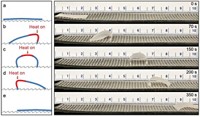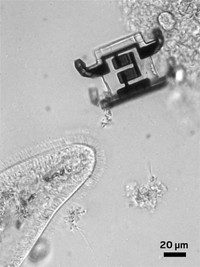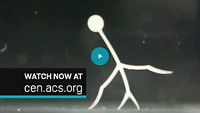Advertisement
Grab your lab coat. Let's get started
Welcome!
Welcome!
Create an account below to get 6 C&EN articles per month, receive newsletters and more - all free.
It seems this is your first time logging in online. Please enter the following information to continue.
As an ACS member you automatically get access to this site. All we need is few more details to create your reading experience.
Not you? Sign in with a different account.
Not you? Sign in with a different account.
ERROR 1
ERROR 1
ERROR 2
ERROR 2
ERROR 2
ERROR 2
ERROR 2
Password and Confirm password must match.
If you have an ACS member number, please enter it here so we can link this account to your membership. (optional)
ERROR 2
ACS values your privacy. By submitting your information, you are gaining access to C&EN and subscribing to our weekly newsletter. We use the information you provide to make your reading experience better, and we will never sell your data to third party members.
Materials
Light Triggers Multiple Motions In A Single Nanostructured Material
Inspired by plant tendrils, chemists build polymeric spirals that can ferry small objects
by Carmen Drahl
February 10, 2014
| A version of this story appeared in
Volume 92, Issue 6
Molecular machines are capable of myriad motions, including rotation and even walking. It isn’t always easy, though, to translate those microscopic motions to the macroscopic scale. One team of chemists has now stepped up to that challenge by encoding multiple motions into a springlike material that responds to light (Nat. Chem. 2014, DOI: 10.1038/nchem.1859). The nanostructured “springs” are made from a liquid-crystalline polymer doped with an azobenzene molecular switch. Working with Oxford University’s Stephen P. Fletcher, Nathalie Katsonis and her coworkers from the University of Twente, in the Netherlands, took inspiration from plant tendrils that coil to access sunlight. The new material was designed to have a twist geometry, which produces ribbons that coil to different extents and with different handedness simply by cutting them from the film in different orientations. The differently cut spirals each have different responses to UV light, including winding, unwinding, or helix inversion. By connecting two spirals that move in different ways, the chemists built a pistonlike machine capable of moving a 2-mg magnet back and forth. The materials may be useful for driving microfluidic systems, Katsonis notes, because they don’t require electrical wiring to work.






Join the conversation
Contact the reporter
Submit a Letter to the Editor for publication
Engage with us on Twitter